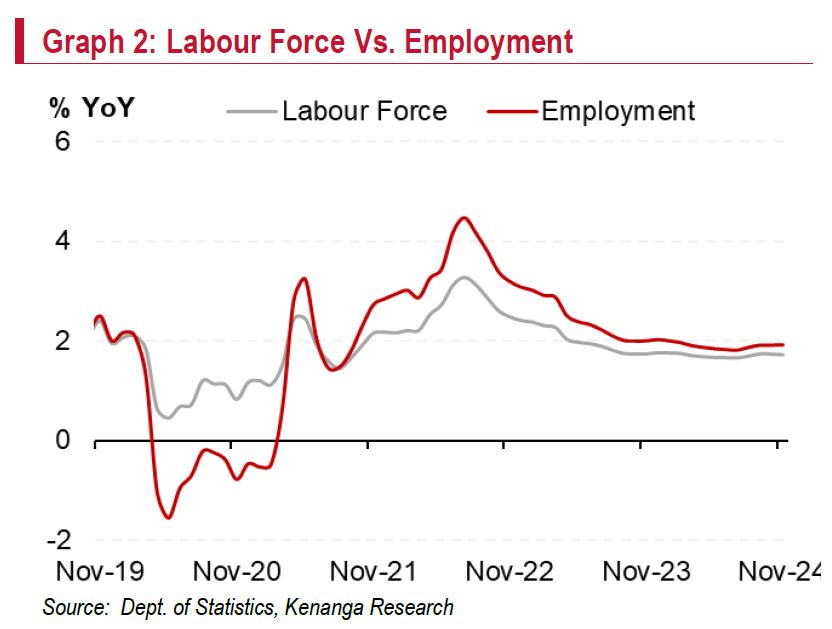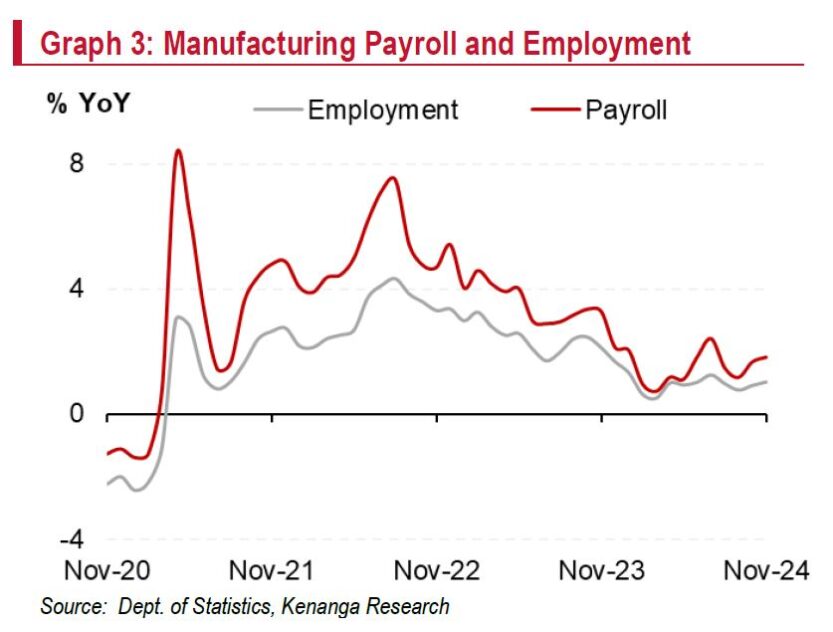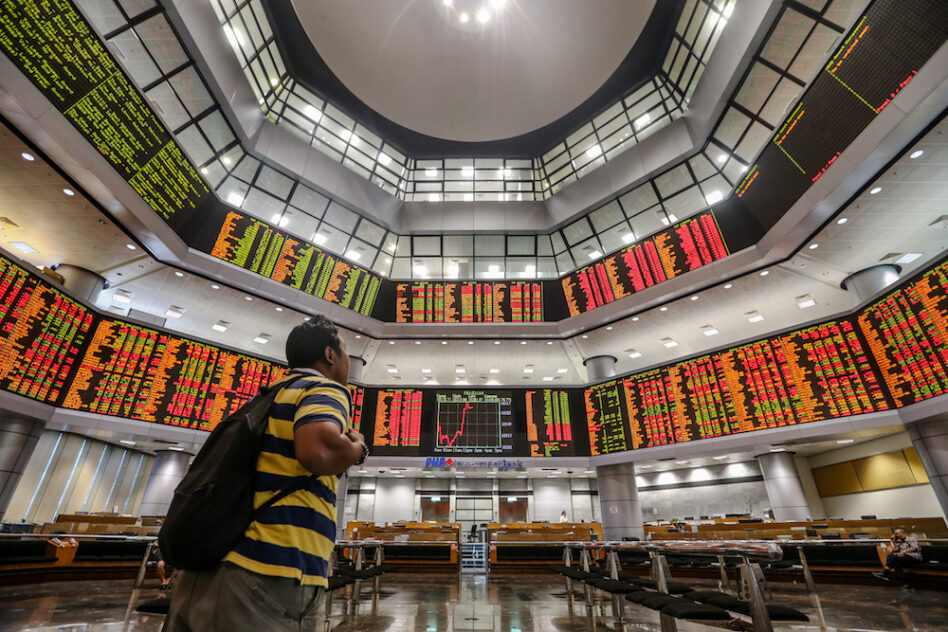THE unemployment rate remained at 3.2% for the fourth straight month, the lowest since January 2020.
Unemployment numbers fell by 0.9% month-on-month (MoM), extending a 40-month decline and the fastest pace in three months.
“In absolute terms, the number of unemployed persons declined to 546.7k, gradually approaching the pre-pandemic level (Feb-20: 525.2k),” said Kenanga Research (Kenanga).
Meanwhile, the actively unemployed fell to 436.2k, the lowest since March 2020 (422.9k), with those unemployed for less than three months decreasing to 272.9k.
Employment growth steady at 0.2% MoM, led by continued strength in the services sector.
According to the Department of Statistics, the number of employed persons in the services sector continued to increase, mainly in wholesale & retail trade, transportation & storage activities and information & communication activities.

Similarly, the number of employed in manufacturing, construction, mining & quarrying, and agriculture also expanded.
Labour force participation rate remained at a record high (70.5%) for the third straight month.
Labour force (0.14% MoM) recorded a steady expansion, adding 24.9k persons, reaching 17.29 mil persons, while those outside the labour force declined further to 7.23 mil.
Towards the global level, the US registered a fall in December (4.1%; Nov: 4.2%) driven by strong job growth and reduced job losses.
Japan remained unchanged in November (2.5%; Oct: 2.4%), with job availability ratio remaining at 1.25 (Oct: 1.25).

The unemployment rate is likely to settle at 3.3% in 2024 (2023: 3.4%), aligning with our forecast.
We have revised the 2025 unemployment rate to 3.1% from the 3.2% projected earlier, banking on steady domestic growth.
Unemployment rate averaged 3.3% in the first 11 months, with quarter four 2024 likely to record the lowest quarterly unemployment rate since quarter four 2019, signalling a return to pre-pandemic levels.
“Our revised unemployment rate forecast of 3.1% for 2025 is backed mainly by a steady domestic demand growth, robust employment expansion in the services and manufacturing sectors, and the realisation of approved investments,” said Kenanga.

Federal government spending, including a record RM421.0 bil in Budget 2025, and the expectation of higher tourist arrivals this year, ahead of the Visit Malaysia Year 2026, are expected to boost hiring.
The 2024 GDP growth forecast remains at 5.0% (2023: 3.6%).
Growth is projected to moderate slightly to 4.8% in 2025, reflecting the base effect and rising external uncertainties amid heightened geopolitical tensions and normalising economic activities. —Jan 13, 2025
Main image: Ono Kosuki









